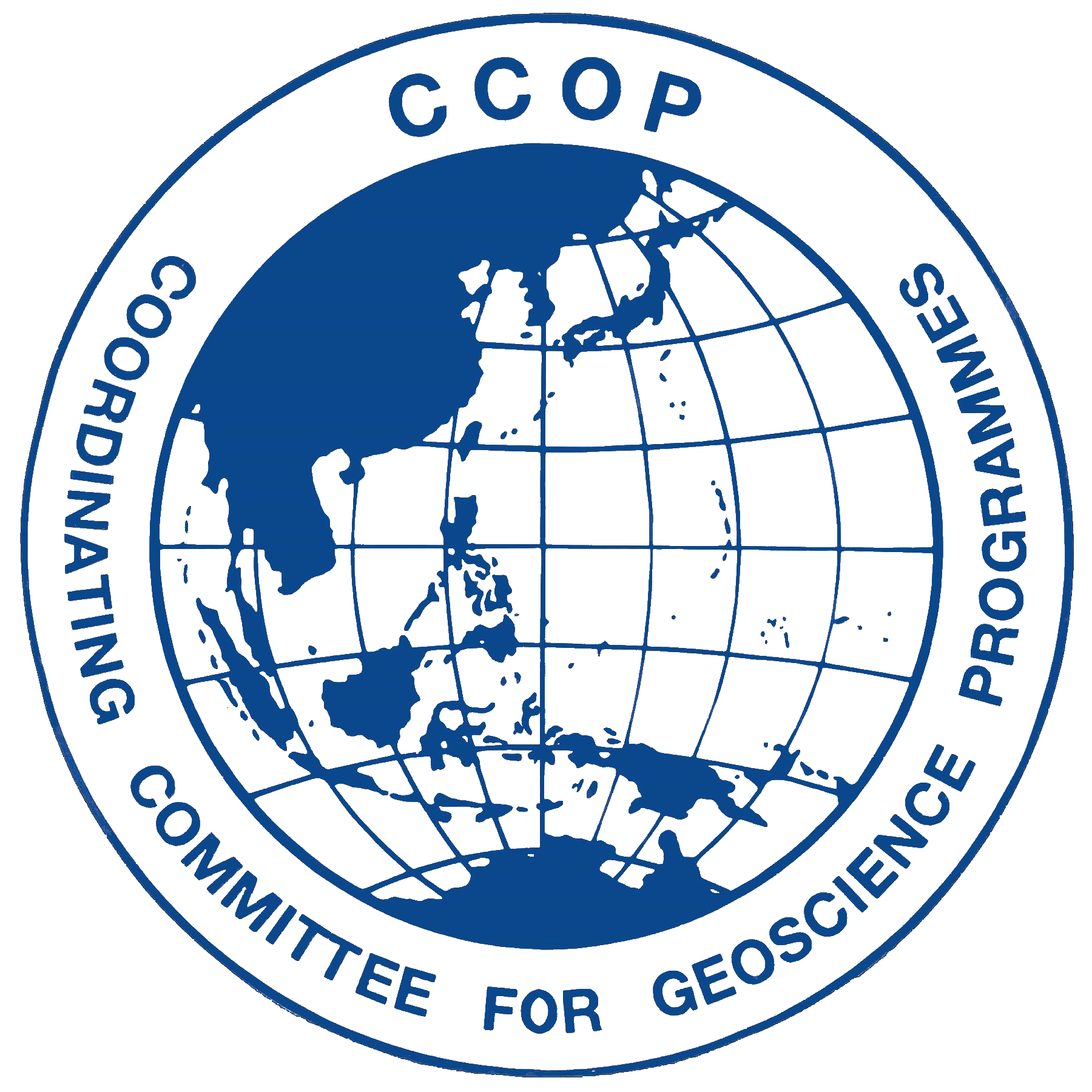Tectonic setting of late Cambrian to early Ordovician meta-tuffs in Kanchanaburi Province, Western Thailand
Keywords:
Late Cambrian-early Ordovician tuff, Proto-Tethys ocean, Sibumasu Terrane, Silurian- -Devonian unit, Volcanic arcAbstract
Meta-tuffs are mapped as a Silurian-Devonian unit in Kanchanaburi Province, Western Thailand. These rocks were discovered and described for the first time in 1976 and mentioned in the 1:250,000 Suphanburi geologic map sheet (ND47-7). The detailed petrography and geochemistry of these rocks are still unclear and insufficient. Petrographically, the meta-tuffs can be named as a meta-quartz-K-feldspar crystal tuff and meta-lithic tuff. They are made up of pyroclasts (volcanic rock, quartz, K-feldspar, devitrified glass) and epiclasts (granitic and meta-sedimentary rocks) embedded in a very fine-grained matrix. The whole-rock composition shows enrichment in SiO2 and K2O and a strong depletion in CaO and Na2O which is related to alteration and low-grade metamorphism. The meta-tuffs are divided into two groups based on immobile element classification. Group 1 rocks can be classified as dacitic-rhyolitic rocks which belong to the calc-alkaline series. Group 2 rocks are considered to be transitional rocks. Their chondrite[1]normalized patterns of both groups display light REE enrichment with nearly flat heavy REE and a negative Eu anomaly, typical for calc-alkaline volcanic rocks. Moreover, these meta-tuffs obviously show a negative Nb-Ta anomaly in the primitive mantle immobile-normalized spider diagram suggested volcanic arc environment. Both REE patterns and spider diagrams are coincident with the tectonic discrimination diagrams, which confirm that these meta-tuffs were formed in a volcanic arc environment. The zircon U-Pb dating of the meta-tuffs yield ages of 498.4+2.40/-3.0 Ma and 482.7+3.6/-1.0 Ma. These meta-tuffs are basement of Sibumasu Terrane. They were formed during the late Cambrian-early Ordovician possibly related to the closure of a proposed Proto-Tethys ocean along the margin of Gondwana.
References
Barr, S. M., & Macdonald, A. S. (1991). Toward a late Palaeozoic-early Mesozoic tectonic model for Thailand. Journal Thai Geoscience, 1, 11–22.
Barr, S. M., & Charusiri, P., (2011). Volcanic rocks. In: Ridd, M. F., Barber, A. J., & Crow, M. J. (Eds.), The Geology of Thailand (pp. 415-439). Geological Society of London.
Bunopas, S., (1976). Geologic map of Changwat Suphanburi, Sheet ND 47-7. Geologic map of Thailand, Series 1:250,000. Department of Mineral Resources, Bangkok.
Bunopas, S., (1980). Geological Survey Report No 2, Sheet Suphan Buri (ND 47-7), Scale 1:250,000. Department of Mineral Resources, Thailand.
Bunopas, S. (1981). Paleographic history of western Thailand and adjacent parts of Southeast Asia: A plate tectonics interpretation (Doctoral dissertation). Victoria University of Wellington, New Zealand.
Bunopas, S., & Bunjitradulya, S. (1975). Geology of Amphoe Bo Phloi north Kanchanaburi with special notes on the Kanchanaburi Series. Journal of Geological Society of Thailand, 1, 51-67.
Bunopas, S., & Vella, P. (1978). Late Palaeozoic and Mesozoic structural evolution of northern Thailand, a plate tectonic model. In Regional conference on geology and mineral resources of Southeast Asia 3(pp. 133-140).
Cawood, P. A., Johnson, M. R., & Nemchin, A. A. (2007). Early Palaeozoic orogenesis along the Indian margin of Gondwana: Tectonic response to Gondwana assembly. Earth and Planetary Science Letters, 255(1-2), 70-84.
Class, C., & le Roex, A. P. (2008). Ce anomalies in Gough Island lavas-trace element characteristics of a recycled sediment component. Earth and Planetary Science Letters, 265(3-4), 475-486.
Ding, H., Zhang, Z., Dong, X., Yan, R., Lin, Y., & Jiang, H. (2015). Cambrian ultrapotassic rhyolites from the Lhasa terrane, south Tibet: evidence for Andean-type magmatism along the northern active margin of Gondwana. Gondwana Research, 27(4), 1616-1629.
Drake, M. J., & Weill, D. F. (1975). Partition of Sr, Ba, Ca, Y, Eu2+, Eu3+, and other REE between plagioclase feldspar and magmatic liquid: an experimental study. Geochimica et Cosmochimica Acta, 39(5), 689-712.
Fisher, R.V., & Schmincke, H.U. (1984) Pyroclastic Rocks. Springer Berlin Heidelberg, New York.
Hu, P., Li, C., Wang, M., Xie, C., & Wu, Y. (2013). Cambrian volcanism in the Lhasa terrane, southern Tibet: record of an early Paleozoic Andean-type magmatic arc along the Gondwana proto-Tethyan margin. Journal of Asian Earth Sciences, 77, 91-107.
Janoušek, V., Farrow, C. M., & Erban, V. (2006). Interpretation of whole-rock geochemical data in igneous geochemistry: introducing Geochemical Data Toolkit (GCDkit). Journal of Petrology, 47(6), 1255-1259.
Jatupohnkhongchai, S. (2018). The discovery of ignimbrite and associates in Western Shan-Thai, Kanchanaburi (Unpublished undergraduate thesis). Mahidol University, Kanchanaburi campus, Thailand [In Thai].
Jatupohnkhongchai, S., Salyapongse, S., Phajuy, B., Gallhofer, D., & Hauzenberger, C. (2020). Pyroclastic rocks from Kanchanaburi and Uthai Thani Province, Inthanon Zone, Western Thailand. In EGU General Assembly Conference Abstracts (p. 19604).
Kawakami, T., Nakano, N., Higashino, F., Hokada, T., Osanai, Y., Yuhara, M., Charusiri, P., Kamikubo, H., Yonemura, K., & Hirata, T. (2014). U-Pb zircon and CHIME monazite dating of granitoids and highgrade metamorphic rocks from the Eastern and Peninsular Thailand-A new report of Early Paleozoic granite. Lithos, 200, 64-79.
Lin, Y. L., Yeh, M. W., Lee, T. Y., Chung, S. L., Iizuka, Y., & Charusiri, P. (2013). First evidence of the Cambrian basement in Upper Peninsula of Thailand and its implication for crustal and tectonic evolution of the Sibumasu terrane. Gondwana Research, 24(3- 4), 1031-1037.
Ludwig, K. R. (2008). Manual for isoplot 3.7. Berkeley Geochronology Center Special Publication.
Metcalfe, I. (1984). Stratigraphy, paleontology and paleogeography of the Carboniferous of Southeast Asia. Mémoires de la Société géologique de France (1924), (147), 107-118.
Metcalfe, I. (2013). Gondwana dispersion and Asian accretion: Tectonic and palaeogeographic evolution of eastern Tethys. Journal of Asian Earth Sciences, 66, 1-33.
Nanorn, S. (2016). Increasing grades of metamorphism due to the intrusion of S-type granite pluton in Khao Tham (Khun Krai) and adjacent areas, Maung district, Kanchanaburi province (Unpublished undergraduate thesis). Mahidol University, Kanchanaburi campus, Thailand.
Panjamart, H. (2016). A Study on Structural Geology in Khao Noen Prang, Khao Hua Lan, KhaoPhu Rang and Khao Phra Tumbon Kaeng Sian, Amphoe Muang, Changwat Kanchanburi (Unpublished undergraduate thesis). Mahidol University, Kanchanaburi campus, Thailand.
Pearce, J. A. (1996). A user’s guide to basalt discrimination diagrams. Trace element geochemistry of volcanic rocks: applications for massive sulphide exploration. Geological Association of Canada, Short Course Notes, 12(79), 113.
Pearce, J. A., Harris, N. B., & Tindle, A. G. (1984). Trace element discrimination diagrams for the tectonic interpretation of granitic rocks. Journal of petrology, 25(4), 956-983.
Ramezani, J., & Tucker, R. D. (2003). The Saghand region, central Iran: U-Pb geochronology, petrogenesis and implications for Gondwana tectonics. American journal of science, 303(7), 622-665.
Sone, M., & Metcalfe, I. (2008). Parallel Tethyan sutures in mainland Southeast Asia: new insights for Palaeo Tethys closure and implications for the Indosinian orogeny. Comptes Rendus Geoscience, 340(2-3), 166-179.
Ueno, K. (1999). Closure of the Paleo-Tethys caused by the collision of Indochina and Sibumasu. Chikyu Monthly, 21, 832-839 [in Japanese].
Ustaömer, P. A., Ustaömer, T., Collins, A. S., & Robertson, A. H. (2009). Cadomian (Ediacaran– Cambrian) arc magmatism in the Bitlis Massif, SE Turkey: magmatism along the developing northern margin of Gondwana. Tectonophysics, 473(1-2), 99- 112.
Wang, X., Zhang, J., Santosh, M., Liu, J., Yan, S., & Guo, L. (2012). Andean-type orogeny in the Himalayas of south Tibet: Implications for early Paleozoic tectonics along the Indian margin of Gondwana. Lithos, 154, 248-262.
Wang, Y., Xing, X., Cawood, P. A., Lai, S., Xia, X., Fan, W., Liu, H., & Zhang, F. (2013). Petrogenesis of early Paleozoic peraluminous granite in the Sibumasu Block of SW Yunnan and diachronous accretionary orogenesis along the northern margin of Gondwana. Lithos, 182, 67-85.
Weill, D. F., & Drake, M. J. (1973). Europium anomaly in plagioclase feldspar: experimental results and semiquantitative model. Science, 180(4090), 1059-1060.
Wood, D. A. (1980). The application of a ThHfTa diagram to problems of tectonomagmatic classification and to establishing the nature of crustal contamination of basaltic lavas of the British Tertiary Volcanic Province. Earth and planetary science letters, 50(1), 11-30.
Zhang, L. K., Li, G. M., Santosh, M., Cao, H. W., Dong, S. L., Zhang, Z., Fu, J. G., Xia, X. B., Huang, Y., Liang, W., & Zhang, S. T. (2019). Cambrian magmatism in the Tethys Himalaya and implications for the evolution of the Proto‐Tethys along the northern Gondwana margin: A case study and overview. Geological Journal, 54(4), 2545-2565.
Zhao, T., Feng, Q., Metcalfe, I., Milan, L. A., Liu, G., & Zhang, Z. (2017). Detrital zircon U-Pb-Hf isotopes and provenance of Late Neoproterozoic and Early Paleozoic sediments of the Simao and Baoshan blocks, SW China: Implications for Proto-Tethys and Paleo-Tethys evolution and Gondwana recon struction. Gondwana Research, 51, 193-208.
Zhu, D. C., Zhao, Z. D., Niu, Y., Dilek, Y., Wang, Q., Ji, W. H., Dong, G. C., Sui, Q. L., Liu, Y. S., Yuan, H. L., & Mo, X. X. (2012). Cambrian bimodal volcanism in the Lhasa Terrane, southern Tibet: record of an early Paleozoic Andean-type magmatic arc in the Australian proto-Tethyan margin. Chemical Geology, 328, 290-30.
Downloads
Published
How to Cite
License
Copyright (c) 2024 Thai Geoscience Journal

This work is licensed under a Creative Commons Attribution-NonCommercial-NoDerivatives 4.0 International License.








